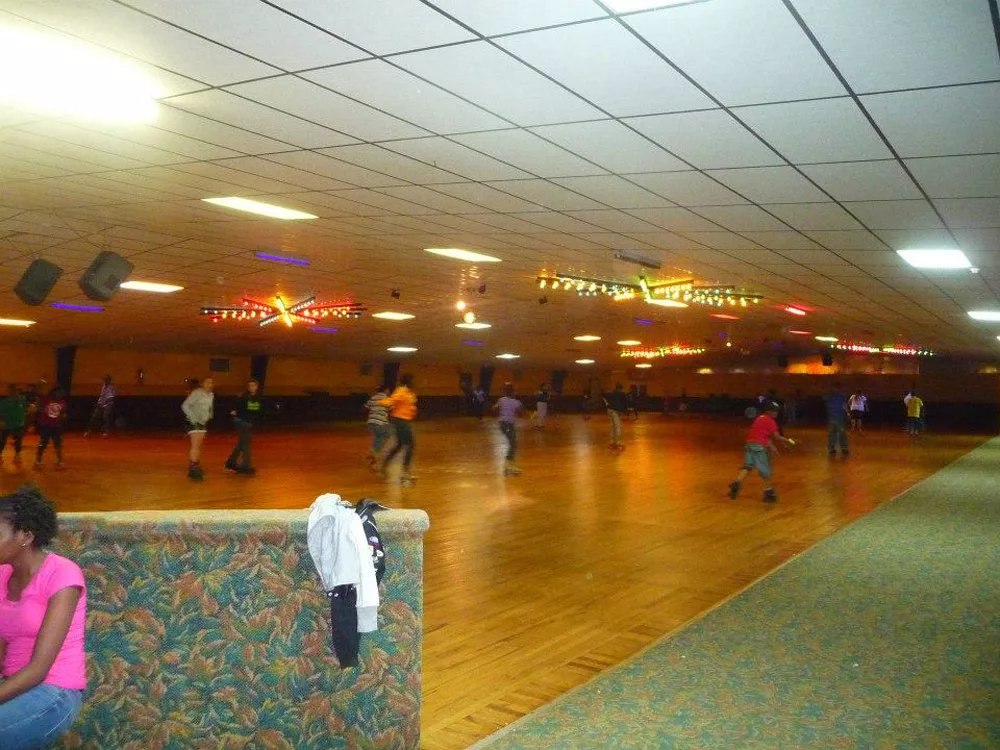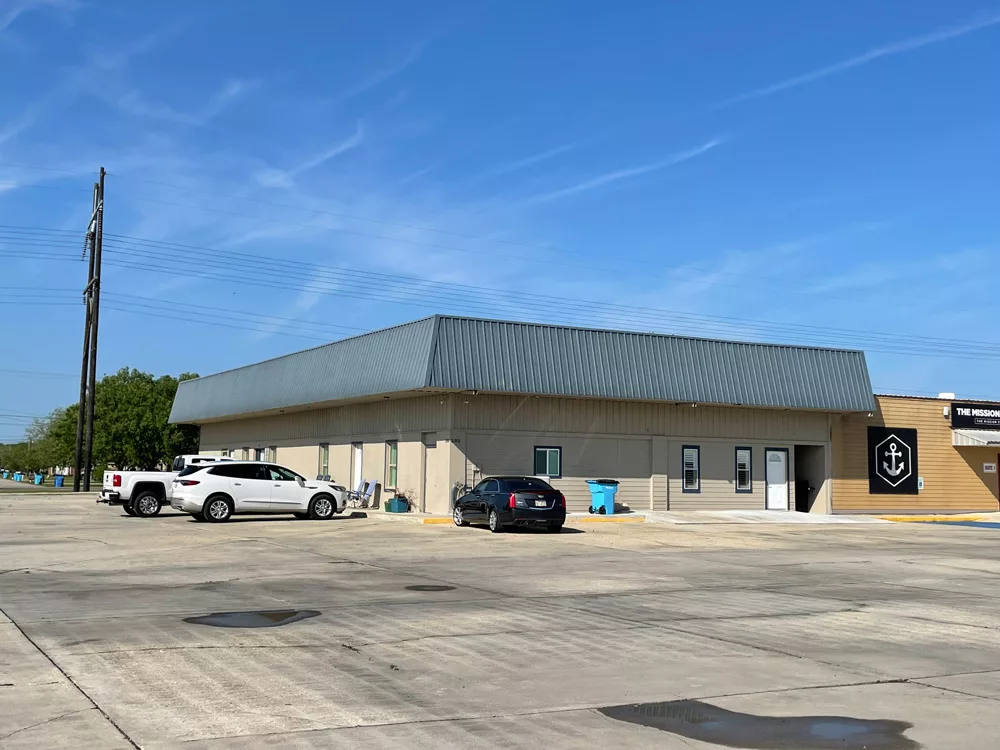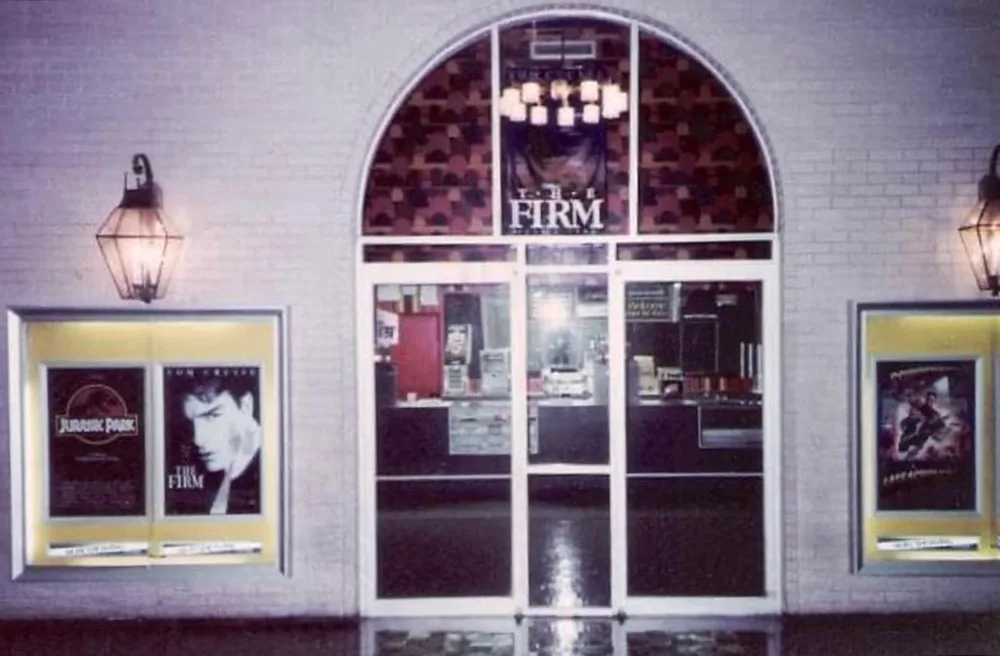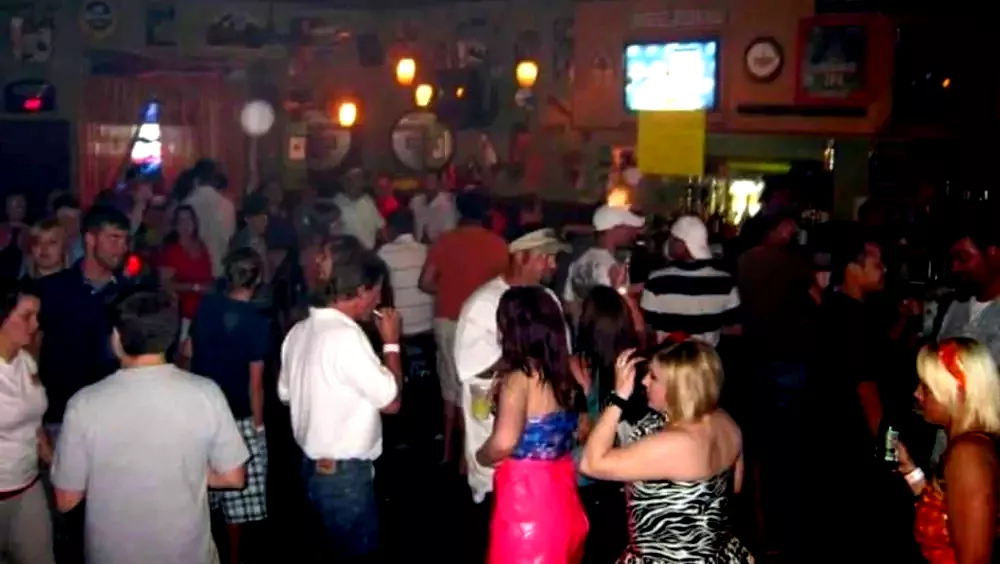Wheels R Rollin

Dominic Lasseigne Staff Wheels-R-Rollin was a roller skating rink located in Schriever, Louisiana, open from 1980 to 2014. The rink offered public skating sessions on Fridays, Saturdays, and Sundays. They also offered private parties, group events, and skating lessons. According to Gerard Clement, the current owner, the rink was remodeled in 2012 and renamed Skooter Gee’s Skating Rink. The remodel included a snack bar and pool tables. Maria Ledet Clause, born and raised in Thibodaux, frequented the rink when she was in fifth and sixth grade. She says that the cool kids would skate backwards with their significant others. In December 2014, the rink closed permanently due to lack of attendance. In the years following, Gerard and his wife Cindy McLaughlin Clement worked on remodeling the building once again. In 2016, the Clement family reopened the building as an event venue named La Patinoire, translating to The Rink in French. La Patinoire The Snack Bar more skating coverage
Patterson Skating Rink

Kelby Toups Staff The Patterson Skating Rink once drove the youth scene in the small town of Patterson, Louisiana. The property where the skating rink used to be was owned by the Letchworth family in the 1970s. John Kimball, the current owner of the property, says they would call it “the skating rink across the tracks” because it helped with giving directions to the place. The skating rink sold food and drinks, had many old arcade games, and, of course, had a large skating floor. Brad Beaubeouf is a Patterson native who went to the rink during his youth in the early 2010s. “I never knew how to skate, but all of my friends would want to go hang out there,” Beaubeouf says, “So my parents would drop me off, and I would wait for my friends to get there and we had a blast.” “My parents would drop me off, and I would wait for my friends to get there and we had a blast.” Brad beaubeouf The Patterson Skating Rink closed in the early 2010s and is now an apartment building. Attached to the back of the building is a strip mall with a thrift store called The Mission Thrift Store, a Pentecostal church called The Mission Church, and a snowball stand called Blizzard 25. Patterson Skating Rink Patterson Skating Rink 1990 Patterson Skating Rink 1990 more skating coverage
Southland Cinema

Daeshawn Armstead Staff The Southland Cinema was opened in 1968 in the Southland Mall in Houma, Louisiana. It was originally a single screen theater but was converted to a twin theater which featured more than one movie screen. The cinema was opened by Gulf States Theatres, an entertainment company located in New Orleans. As the theater’s business expanded it was later converted into a quad. “As a kid walking into Southland Cinema, I can just remember how big the space was,” says Kyle Crispino, who frequented the cinema as a child. “It was only four theaters but it felt like a maze.” For more than 30 years, Southland Cinema was one of the only theaters in the Houma area. In 2000, the theater was taken over by the United Artists Theatre Circuit, a motion picture company and later abandoned. The theater was then sold in 2004 to partners Kearson Levett and Barry Bynum of Houma. But declining numbers finally forced them to close permanently in 2007. “It was one of the only fun places to go, so I was sad when it closed,” Crispino says. “It was one of the only fun places to go, so I was sad when it closed.” Kyle Crispino But the new owners couldn’t afford the auditorium so they made it a discount cinema. Then in 2007, the cinema was closed permanently and what was left of the theater was transferred to the AMC Theater located in Houma. Welcome to Southland Cinema, 1986 Southland Cinema, 1985 Southland Cinema Entrance Southland Cinema Abandoned Ticket Booth more movie coverage
Legion Park Pool

Dominic Lasseigne Staff Legion Park Pool was a swimming pool in Houma constructed in 1938 by the Works Progress Administration, an organization formed by President Franklin D. Roosevelt’s New Deal program that enlisted out-of-work men to build public works projects like the pool. The American Red Cross ran the pool, located on Williams Avenue, for years, employing lifeguards, vendors, and swim coaches. According to records in the Terrebonne Parish Library, young children paid 10 cents while older children paid 25 cents. Some of the lights from the tennis courts still remain pointed towards where the pool was. During the 1950s, the pool was gradually updated. The pool had two extra pools built, a diving pit, and a snack shop. Swimming classes were taught every summer. According to the State Library of Louisiana, the main pool was 60 feet by 150 feet in size with 10-foot cement walkways on all four sides. The pool was 3 feet to 9 feet deep. The State Library of Louisiana mentions that swimming classes were also given here to offshore oil workers. Men fell into the diving pit fully clothed with steel-toe boots to reenact falling off of a rig. What Happened? Prior to the 1960s, the pool was exclusively for white people. When the pool opened for everyone, racial tensions caused the usage of the pool to fall dramatically. The pool was reopened briefly in the 1980s. Bennett Porche, a Houma native who was in his late teens when the pool reopened, says summertime would attract close to a hundred kids every weekend. For a few years the pool survived, finally closing permanently that same decade. Since then, the pools were abandoned and the water became green. In 2008, the abandoned pool was demolished. It had gone unused for approximately 20 years at the point of demolition. Remnants still remain, such as a path from the street and various concrete slabs scattered throughout the yard. Though grass has covered most of the pool’s remains, some patches of gravel can still be found. According to Terrebonne Parish officials in 2008, there were talks of replacing the pool with something else: an outdoor concert venue, skatepark, and indoor swimming facility were all floated ideas. Nothing has been done with the land since. Legion Park Pool, 1934 Old Entrance to Legion Park Pool Remnants of Legion Park Pool Lights Facing Abandoned Legion Park Pool
Jet Drive-In

Kelby Toups Staff For more than 40 years, Cut Off, Louisiana, was the home of one of the Bayou Region’s most popular youth hangout spots. Jet Drive-In was a drive-in movie theater built in 1953, founded and owned by Richard ‘Dick’ Guidry and Lefty Cheramie. At the time of the drive-in’s opening, the Korean War had begun and jet aircrafts were the newest, modern thing. So, Guidry and Cheramie decided on the name “Jet” because of the short name that kept the price of their neon sign down. “They would show one movie from Sunday to Wednesday,” says Dennis Guidry, son of the founder Richard Guidry. “They would have a showing on Thursday for ‘Bank Night’ which I never understood what that was. Lastly, [they] showed another movie Friday and Saturday.” Dennis Guidry told a story about a movie called “The Moon is Blue,” a romantic comedy film released in 1953, that became very controversial for profanity throughout the film. And while the movie was banned nationally, the drive-In showed the film for four weeks straight. “It was unheard of, especially on the bayou,” says Dennis Guidry. “It was unheard of, especially on the bayou.” Dennis Guidry Richard Guidry passed the drive-in down to Dennis Guidry who took ownership in 1980. On opening night, they would show “White Lightning” with Burt Reynolds and the line went out of the parking lot. Wade Fanguy, a Larose native, says that one of the last films he remembered seeing was “The Rocky Horror Picture Show.” “It was interesting because it was an audience participation type of show and I think there may be very few films that still do that,” he says. Eventually Dennis Guidry sold the cinema and, under the new owners, it closed for good in the late 1990s. Currently, the building where the cinema used to stand is now the Greater Lafourche Port Commission. more movie coverage
Lights Fantastic

Jace Paul Fanguy Staff In 1978, South Lafourche High School students were still mourning the loss of one of the greatest clubs on the bayou, the Safari. But then The Lights Fantastic opened its doors, becoming the new hot spot for high schoolers to show off their dance moves. The club, located between Larose and Golden Meadow, was complete with a disco ball and the first light-up floor on the bayou, just like in the movies. Elizabeth Perque showed off her moves, winning a dance competition at the Lights on her first try. “They asked ‘If anyone wants to participate in the dance contest, get on the floor,” says Perque. “Me and my partner were very good at the jitter-bug and other disco dances, and we were the last ones left and won.” “Me and my partner were very good at the jitter-bug and other disco dances, and we were the last ones left and won.” Elizabeth Perque Although the Lights Fantastic was fun, it was crowded from wall to wall on most nights. The crowd also made the Lights a hot place, literally. Martha Mouton learned how hot it was the hard way, passing out at the Lights due to the heat. “It was New Year’s Eve and it was packed, probably over capacity,” says Mouton. “I was squeezing through the people while fighting the heat. Someone tapped me on the shoulders and as I turned around I fainted. I didn’t even have a sip of alcohol that night, it was just that hot.” The Lights changed its theme after the Big Apple, a much larger club, opened a few minutes down the bayou, attracting more people. Gone were the disco days of the Lights, as the club transformed into a hub for live music. The dance floor was taken out and replaced with a stage, and the walls were carpeted for better acoustics. Popular bands on the bayou like The Producers, Halifax, and Zebra would rock the night away. WHAT HAPPENED? Unfortunately, this change also attracted the wrong crowd. Biker gangs, at the time, began to cause a lot of trouble at the Lights, turning away crowds. “There was nothing fantastic about it anymore,” says Buddy Miller. “The wheelers (bikers) just commanded the place, they would bully everyone in there. It made everyone uncomfortable, so I took my money and spent it elsewhere.” It is not certain if the bikers were the reason the Lights closed, but the rise in popularity of live music clubs like The Greenhouse certainly didn’t help. The club changed its name to Windjammers in the late 1980s, but would close soon after, turning into a flower shop. All that remains is a concrete slab where the building once sat, and the memories of those who attended. Lights Fantastic Schedule Ticket
Rainbow Inn

Jordyn Voisin features editor Nestled in the heart of Pierre Part off U.S Highway 70, is an old, abandoned building wasting away from the effects of time. Since its opening in the 1930s, the building has been a thriving bar, restaurant and dance hall known as the Rainbow Inn. Eve Justilian who moved to Pierre Part in 1992, heard of the Rainbow Inn long before she arrived in town; but when she finally walked through the doors she felt like she was in “a part of history.” The Rainbow Inn was a place where locals would go to indulge in the best hamburgers or dance the night away listening to local swamp pop bands. “Swamp pop is a form of country music with cajun culture thrown in for a flare,” says Justilian. Pierre Part is home to many swamp pop musicians who became popular singing at the Rainbow Inn; such as The Richard Brothers and Don Rich. Rich says he grew up at the Rainbow Inn as a kid, eating hamburgers and drinking coke which he bought for 15 cents. “The Inn had the greatest hamburgers I ever ate,” says Rich. “They were homemade, not like they are today.” “The Inn had the greatest hamburgers I ever ate. They were homemade, not like they are today.” Don Rich Rich’s dad was part of The Richard Brothers band who would play at The Rainbow Inn when he was a child; then in his early 20s, he began playing there himself. Rich has been playing swamp pop music for 57 years and he still loves it today, but his most memorable experiences at the Rainbow revolved around the food. Since its opening in the 50s, the talk of the Rainbow Inn’s food made its way around Pierre Part quickly. Jennie Justilian who was born and raised in Pierre Part, says that she began going to the Inn when was 13 years old and was able to sit in the kitchen while the women cooked. Once Jeannie Justilian got older she would dance the nights away doing the jitterbug and drinking her favorite soda, a Cherry Coke. During that time, boys had to pay 25 cents to be able to dance but the girls were free. Despite its popularity, The Rainbow Inn shut its doors in 2019 due to the owners getting older and not being able to handle the property. The Rainbow Inn Richard Brothers at Rainbow Inn
The Greenhouse

Alayna Yarwood Staff The small town of Cut Off, Louisiana, was home to a busy club called The Greenhouse — a hub for young adults from Cut Off, Larose and surrounding communities. From 1982 to 2012, young adults would frequent The Greenhouse from Wednesday through Saturday nights to drink, dance, and hang with friends. “The early days in the week were more for hanging out, and the crowds were not too big,” says Bull Johnson, who worked as a bouncer at The Greenhouse. “Wednesdays used to be ladies’ nights, but Thursdays, Fridays, and Saturdays were the busiest nights.” Dancing and music were a big part of The Greenhouse. Owner Toby Melancon’s daughter Shae Melancon says, “My dad was able to get bands from across the U.S and even outside of the U.S to play on that stage.” Some of the bands that played on The Greenhouse stage were Dream Junkies, DNA, Crush, Enter the Machine, The Stranger, and Uncrowned. “It was a place people enjoyed being at to meet up with friends; and a stage bands loved to play on.” Melancon says. “It was a place people enjoyed being at to meet up with friends; and a stage bands loved to play on.” Shae Melancon The Greenhouse was also known for its themed nights like glow parties, ’80s nights, and naughty Santa costume parties. Crystal Redmond started going to The Greenhouse in 1984 when she was just 18 years old. A year later, Redmond met her husband at the club and they have been married for 33 years. “It’s funny telling my kids I met their dad at The Greenhouse,” Redmond says. “We wouldn’t leave to go out until 9 p.m. and we stayed out until 4 a.m. We would mainly go to dance. ” Melancon says after the BP oil spill in 2010, people didn’t have as much money and stopped going out to the club as much. Then the shopping center where The Greenhouse was located was not maintained after hurricanes, causing the club to close in 2012. The Greenhouse The Greenhouse 2010 Greenhouse Bartenders and Band Costume Party 2011 Damage Inside The Greenhouse 2023
The Back Road

Daeshawn armstead Staff Before Lafourche Parish’s Highway 3225 was paved, it was an old shell road known as The Back Road where youth would hang out. It was sand from Golden Meadow to West 107th street and limestone to Larose,” recalls Avery Dufrene, who used to go to The Back Road. The Back Road was a place where youth would meet up to hang out, drink, go mud-riding, party and fight without parental supervision. This spot was popular because of its lack of checkpoints. Checkpoints – where police would stop and inspect cars – would be on LA-1, leaving The Back Road police free. During this time, in the ’70s and ’80s, phones and the internet were not as easily accessible/portable as they are now. If a teenager wanted to stay in the loop, they had to be on The Back Road in order to socialize. Jamie Pitre, a local resident, remembers a time when he and his friends were asked by a teacher at South Lafourche High School to fill the van’s tank. “We took his van to The Back Road and started doing donuts,” says Pitre. “We took his van to The Back Road and started doing donuts.” Jamie Pitre Wade Fanguy says The Back Road was a place where they could kick back and have fun. “We used to go there to ride our 3-wheelers and drink beer almost every day,” he says. The Back Road was a popular hangout spot until the road was paved and turned into a highway in 1985.
Riding the Avenue

Alayna Yarwood Staff For almost 40 years Donaldsonville was home to a popular teen hangout: Railroad Avenue. Railroad Avenue was a half-mile-long road where teens like Nicki Boudreaux, Erin Theriot, and Leslie Tenney would spend hours riding up and down the road every Friday, Saturday and sometimes Sunday nights in the 1990s. “On the weekends, when you wanted to do something with friends, you would get in a car, ride from the railroad tracks to the river, make a loop, and go back up and down,” says Boudreaux. Everyone knew people would be at the avenue if it was a Friday or Saturday night. “Riding the avenue,” as it was called, started before the 1960s and was carried on from generation to generation until the 1990s. Cars riding the avenue would be filled to the max so sometimes people would need to sit on each other’s laps. Teens would make mixtapes to listen to while they rode up and down the avenue. Cars would flash their lights at other passing cars, signaling them to pull over and chat. The avenue was also how word spread about parties happening in the area. While riding the avenue, teens would stop by The First & Last Chance Café, also known as “The Chance.” Teens would grab a bite to eat at the cafe, open since 1921, then spend time outside and behind the restaurant. After football games, students would ride the avenue until curfew, which was sometimes 1 or 2 a.m. “Riding the avenue and The Chance went hand in hand,” says Tenney. “It was the perfect location for people to get out of their car, talk in large groups, grab something to eat, and run in for a restroom break. It was tradition to write your name on the wall in that restroom.” “Riding the avenue and The Chance went hand in hand.” Leslie Tenney The Chance is still on the avenue and loved by many locals, however, the weekend tradition of riding the avenue was lost as years went by. “There was starting to be a lot of fights and trouble,” says Theriot. “When the local police were tightening up security and patrols, the first rule that went into place was that there was no stopping at The Chance. That just about killed it for a lot of people. They also began to be very strict with the curfew laws. Obviously, they couldn’t ban folks from driving on the roads, but they did make it very hard to hang out when you weren’t inside of a vehicle.” Railroad Avenue Street Sign Riding the Avenue, 1960s The First and Last Chance Sign, 2022 Railroad Avenue, 1950s The First and Last Chance
